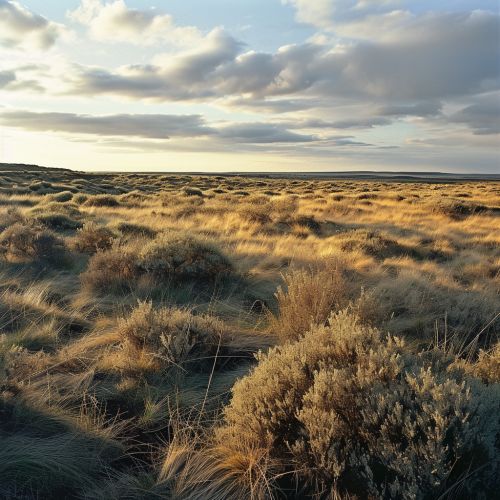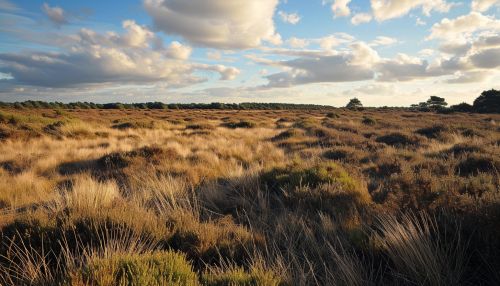Heathlands
Introduction
Heathlands are a unique type of ecosystem characterized by low-growing, hardy shrubs and a variety of grasses and herbaceous plants. These ecosystems are typically found in areas with poor, acidic soils, which limit the types of plant species that can thrive. Despite these challenging conditions, heathlands support a diverse range of wildlife and are of significant ecological and conservation importance.


Formation and Characteristics
The formation of heathlands is largely influenced by the underlying geology and climate. They are typically found on sandy or gravelly soils, which are low in nutrients and have a high acidity. This is due to the weathering of the parent rock material, often sandstone or granite, and the leaching of nutrients by rainfall. The poor soil conditions result in a landscape dominated by hardy, acid-tolerant plant species, such as heathers (Calluna vulgaris, Erica cinerea), gorse (Ulex europaeus), and various grasses and sedges.
Flora and Fauna
Despite the harsh conditions, heathlands support a rich diversity of plant and animal species. The dominant plant species are typically dwarf shrubs, particularly heathers and gorse. These plants have adapted to the poor soil conditions through various mechanisms, such as the ability to fix nitrogen from the atmosphere, a trait common in the Fabaceae family to which gorse belongs.
Heathlands also provide a habitat for a variety of wildlife species. Many bird species, such as the nightjar and stone-curlew, rely on heathlands for breeding. These habitats are also home to a range of invertebrates, including many species of butterflies and moths that are not found in other habitats.
Conservation and Threats
Heathlands are under significant threat from a variety of factors. One of the primary threats is the encroachment of trees and other woody plants, a process known as succession. Without regular management, such as grazing or burning, heathlands can quickly revert to woodland. Other threats include urban development, agriculture, and climate change.
Conservation of heathlands is therefore of paramount importance. Many heathland areas are now protected under law and are managed to maintain their open, shrubby character. Management techniques include controlled burning, grazing, and the removal of encroaching trees and shrubs.
Cultural Significance
Heathlands have a long history of human use and have played a significant role in many cultures. In the past, heathlands were often used for grazing livestock, and the gorse and heather were used for fuel and fodder. Today, heathlands are valued for their recreational opportunities, such as hiking and birdwatching, and for their aesthetic appeal.
